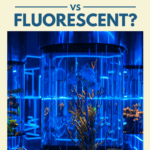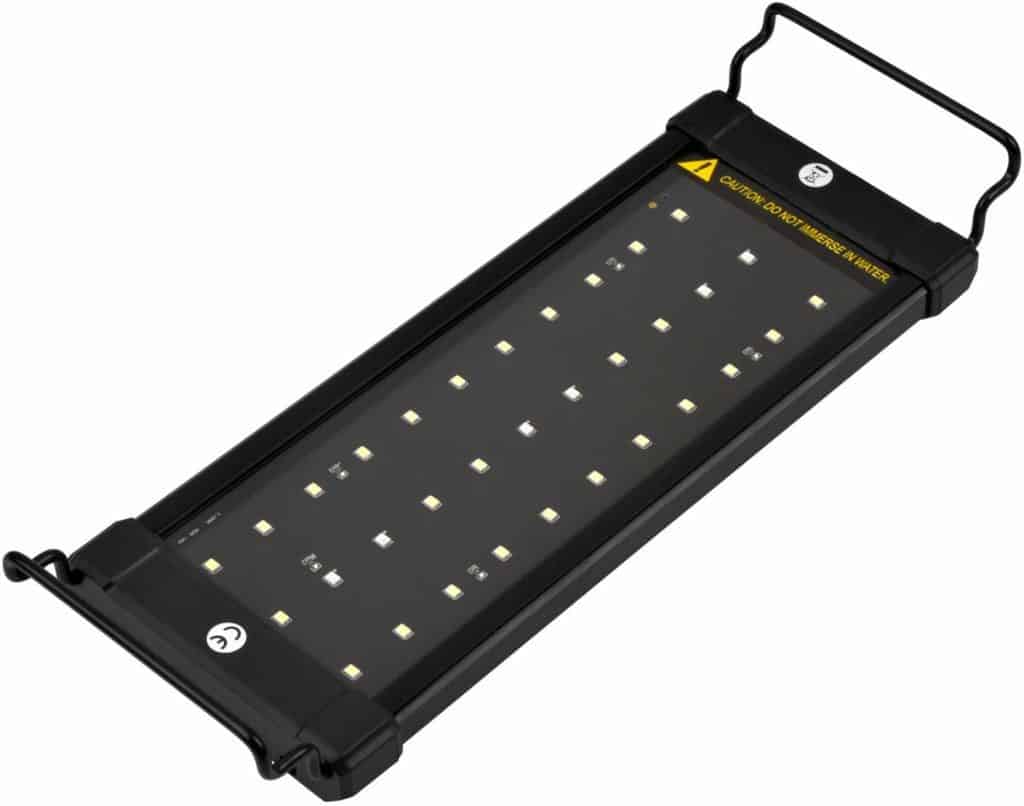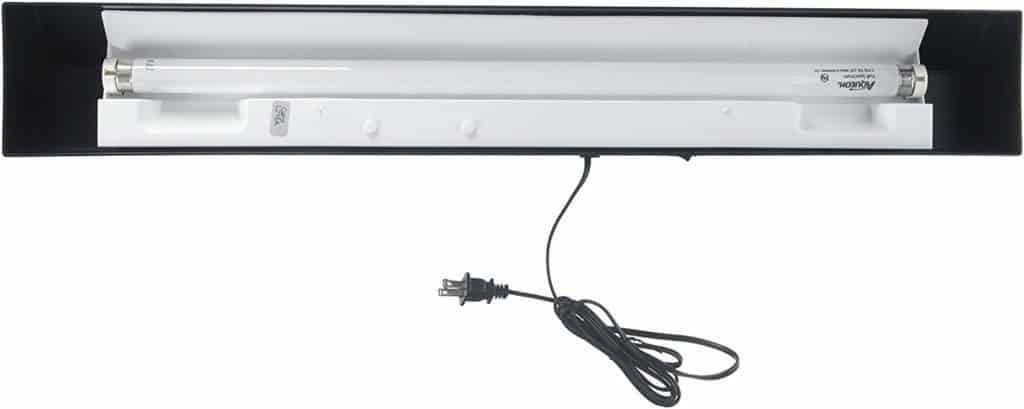The correct aquarium lighting is necessary to illuminate and show off the exciting additions to your tank. It is an important part of the décor of an aquarium and can pull the focus of a room right to your tank or even pull the room’s interior decorating into an easily finished state. Whether you use a soft backlight to make the tank glow from the inside-out or a bright “notice me” light in your aquarium, it is important to have one for more than just decorative reasons.
Any type of aquarium should have some sort of lighting system within the chambers to promote a healthy environment for both the plant and the marine life that live in your tank. Aquarium lighting is a driving force behind a long and healthy partnership with your aquarium and its contents.
Aquarium Light LED VS Fluorescent Comparisons
Fish bowls and tanks
2.5 and under
(not recommended for bettas)
Raising Water ~10°F
5 to 7.5 Watts
May not be reliable
Raising Water More Than 10°F
7.5 to 10 Watts
May not be reliable
Aquarium Size (gallons) 5
Raising Water ~10°F
15 to 25 Watts
Raising Water More Than 10°F
50 Watts
Aquarium Size (gallons)10
Raising Water ~10°F
50 Watts
Raising Water More Than 10°F
100 Watts
Aquarium Size (gallons) 20 to 25
Raising Water ~10°F
100 to 150 Watts
Raising Water More Than 10°F
150-200 Watts
There are numerous options when it comes to aquarium lighting – with options in size, shape, wattage strength, unique features and more. But the most common question people ask themselves or the experts is what is the difference between traditional fluorescent aquarium lights and the modern day LED ones? While they ultimately serve the same purpose, there are some tell-a-tale differences between each product and today we are going to break down they are.
LED Aquarium Light
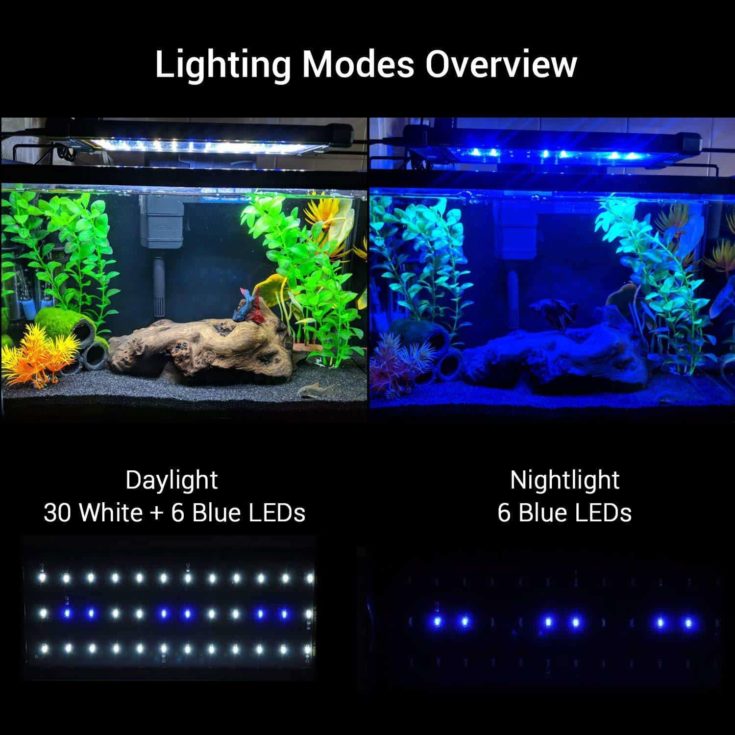
LED actually translates into Light Emitting Diode and uses electrical currents to create a cool and soft light. LED lights have little microchips in each bulb that converts small electrical currents into the light we see shining out of the glass. They can be purchased in numerous colors and offer a soft, warm or cool light for the aquarium.
LED lighting has increased in popularity for all your household needs from small to big areas which require a source of light and especially in situations such as aquariums which could require lighting up to 12 hours a day. This increased popularity can be a result of the fact it is not as hard on the environment or the wallet as halogen lights can be.
LED aquarium lights will also provide heat which will affect the water temperature within the tank, so it is important to determine the number of lights that are needed and for how long they should be in operation as to not overheat the water to disastrous results.
Fluorescent Aquarium Light
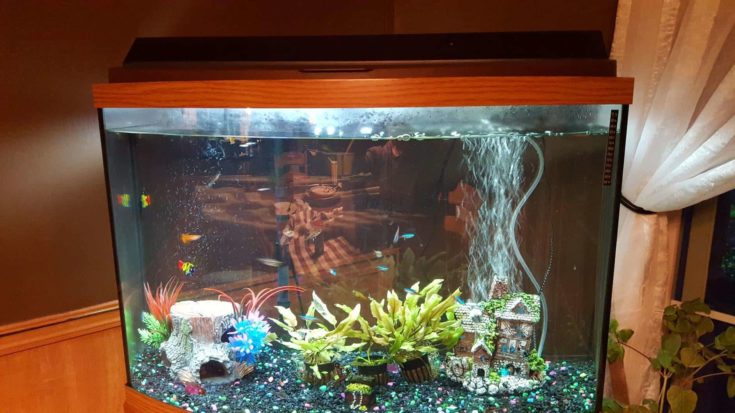
A fluorescent light bulb is the type of light bulb that is typically found all over your home, both inside and out. Available in a range of sizes, shapes and illumination strengths, fluorescent lights use electrical currents and mercury vapors to produce a steady source of light to the area in which it is placed. These mini electrical currents interact with the mercury vapors within the tube where the bulb is housed and will emit a glow based on the wattage level selected.
As many aquarium lighting systems use fluorescent light bulbs, it is easy to find a product that will benefit rather than harm your marine and plant life. Some light kits cannot be converted into a LED light system and if they can, the bulbs might have to be purchased at a specialty store for a higher cost then you are comfortable with.
While not as initially expensive as the LED light bulbs for aquariums, their lifespan is noticeably shorter leading to frequent bulb replacements. The good thing about this is that fluorescent bulbs are normally available at your local hardware store but as they contain vapors; it is crucial to recycle them as per instructions.
Conclusion
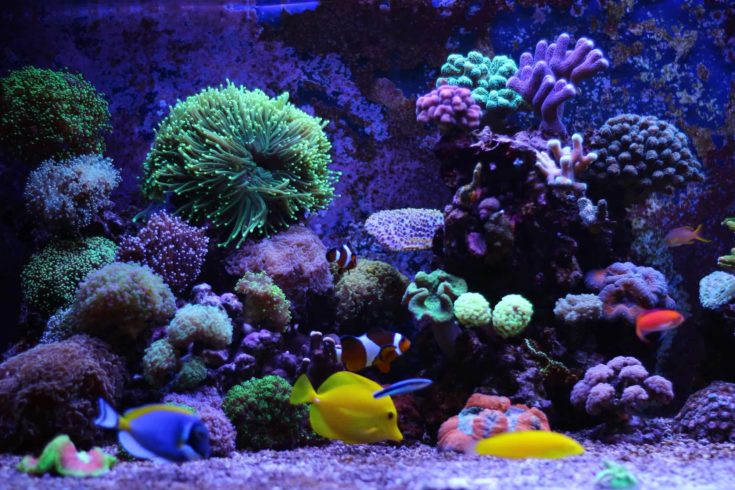
So, we just finished looking at the key differences and similarities between LED aquarium lights and fluorescent aquarium lights. There really isn’t a clear-cut answer as to what one is better but instead, a solid understanding that the answer is in honesty, entirely up to the owner of the aquarium. If you have always used a fluorescent lighting system in your aquarium and do not want to change this tried-and-true style of lights, then maybe it’s time to upgrade to a newer, more efficient, lighting system.
Perhaps you are ready to make the switch to LED aquarium lights and just wanted to know where you can find information regarding how the change will affect your marine life. Maybe you were curious as to why so many people are switching because it can’t be just because of a cheaper monthly utility bill.
Speak to an expert at your local pet store or consult with avid fish caregivers through online forums to discover new and exciting ways to use your aquariums lights to their maximum potential!
